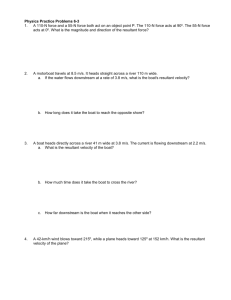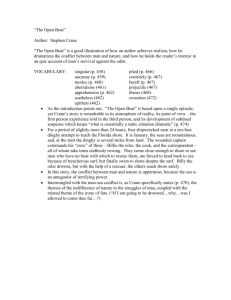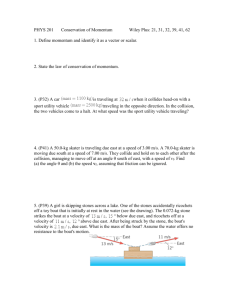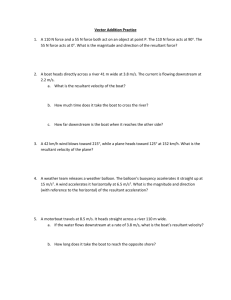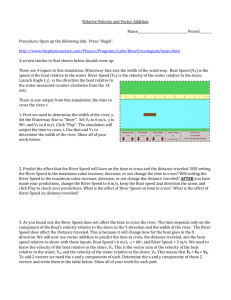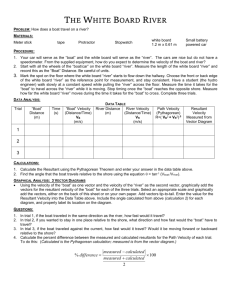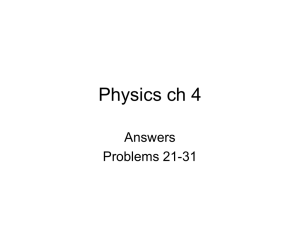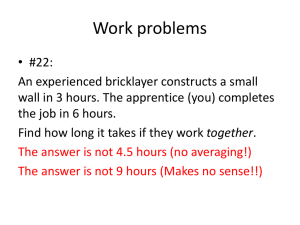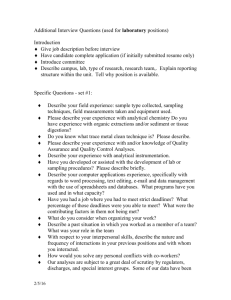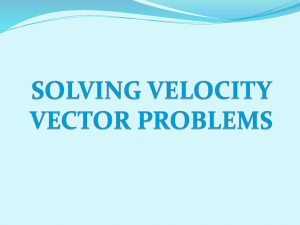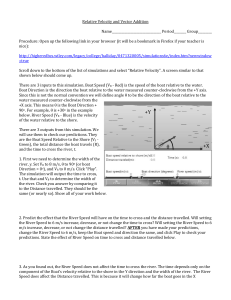Velocity Vector Addition Homework
advertisement
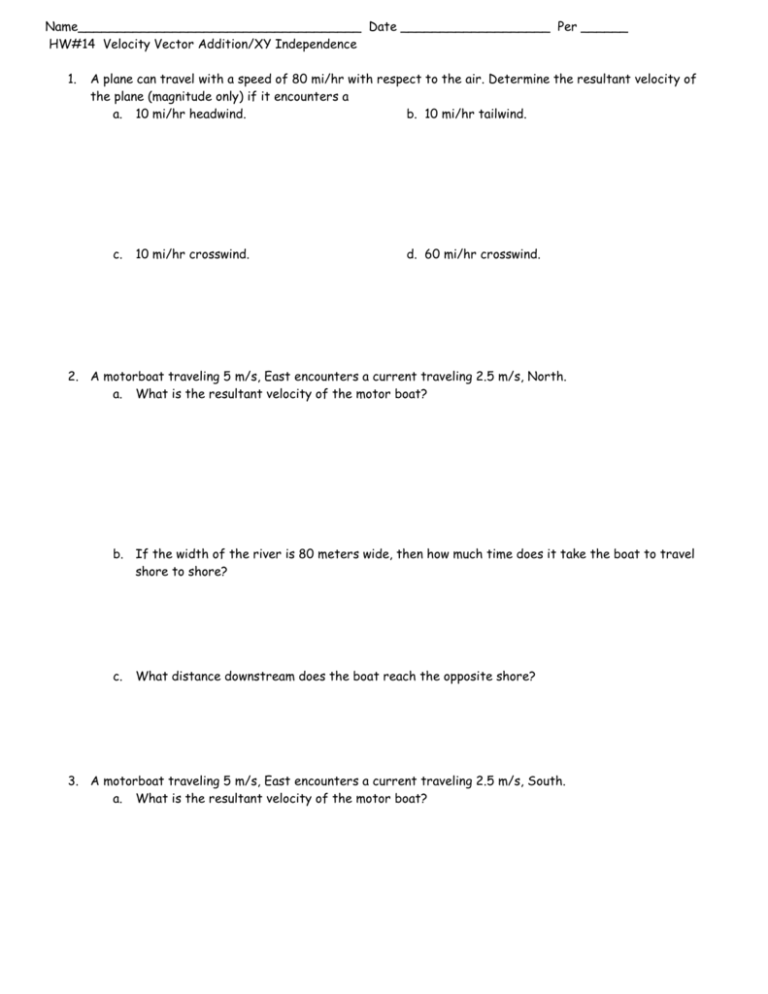
Name____________________________________ Date ___________________ Per ______ HW#14 Velocity Vector Addition/XY Independence 1. A plane can travel with a speed of 80 mi/hr with respect to the air. Determine the resultant velocity of the plane (magnitude only) if it encounters a a. 10 mi/hr headwind. b. 10 mi/hr tailwind. c. 10 mi/hr crosswind. d. 60 mi/hr crosswind. 2. A motorboat traveling 5 m/s, East encounters a current traveling 2.5 m/s, North. a. What is the resultant velocity of the motor boat? b. If the width of the river is 80 meters wide, then how much time does it take the boat to travel shore to shore? c. What distance downstream does the boat reach the opposite shore? 3. A motorboat traveling 5 m/s, East encounters a current traveling 2.5 m/s, South. a. What is the resultant velocity of the motor boat? b. If the width of the river is 80 meters wide, then how much time does it take the boat to travel shore to shore? c. What distance downstream does the boat reach the opposite shore? 4. A motorboat traveling 6 m/s, East encounters a current traveling 3.8 m/s, South. a. What is the resultant velocity of the motor boat? b. If the width of the river is 120 meters wide, then how much time does it take the boat to travel shore to shore? c. What distance downstream does the boat reach the opposite shore? 5. If the current velocity in question #4 were increased to 5 m/s, then a. How much time would be required to cross the same 120-m wide river? b. What distance downstream would the boat travel during this time? 6. A boat heads straight across a river. The river flows north at a speed of 3 m/s. If the river current were greater, then the time required for the boat to reach the opposite shore would not change. a. True or False? b. Why? 1 a) 70 mi/hr b) 90 mi/hr c) 80.6 mi/hr d) 100 mi/hr; 2 a) 5.59m/s, 26.6o N of E b) 16.0s c) 40m; 3 a) 5.59m/s, 26.6o S of E b) 16.0s c) 40m; 4 a)7.10m/s, 33.4o S of E b) 20.0s c) 76m; 5 a) 20s b) 100m
